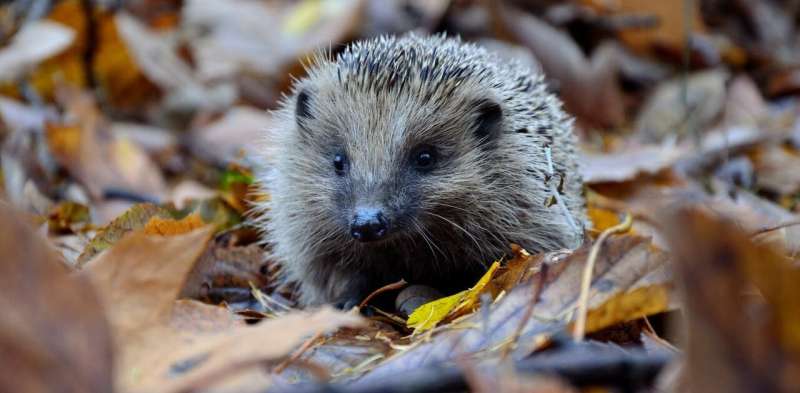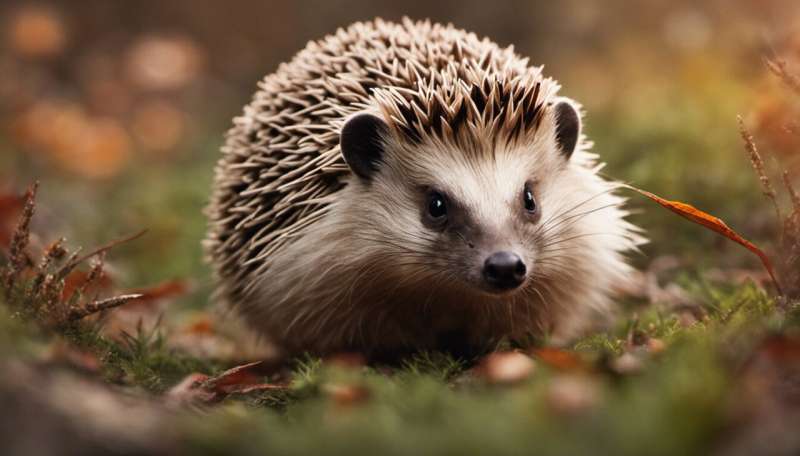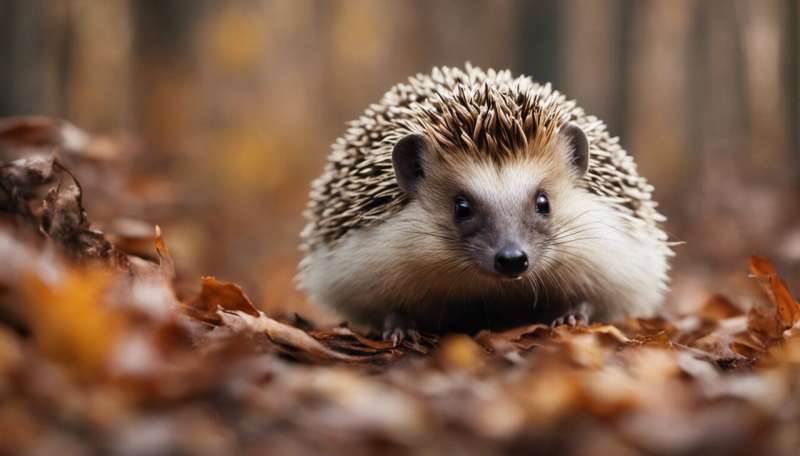Why autumn is such a dangerous time for hedgehog mothers – and how to help them

After months of hard work raising hoglets by themselves, autumn finds female hedgehogs in a rush to fatten up before hibernation. It's a busy time of year which brings them closer to roads and the risk of being squashed. During the rest of the year, male hedgehogs are more likely to die on roads. Their relentless instinct to breed means they travel far and wide to find mates, facing the prospect of risky road crossings on their way.
While enabling easy movement for us, roads create several barriers for wildlife. In Europe, there are five hedgehog species. If you travelled across the continent, you would drive by an average of almost one dead hedgehog per kilometre. This rate is far lower in countries such as Ireland and Finland, but when you consider that Europe has over 6 million kilometres of road, these figures are frightening.
France has already seen local extinctions of hedgehog populations, while UK hedgehogs were recently listed as vulnerable to extinction. My research team and I wanted to know whether road deaths were contributing to these declines, so we scoured published research. Our review laid bare the toll that roads take on hedgehogs across Europe—and uncovered ways to make them safer.
Roadkill
In Poland, one study suggested that roads kill up to 24% of hedgehogs in some populations each year. Whether a population can sustain these losses will depend on the other pressures hedgehogs face, including natural predation and the quality of their habitat, as well as how fast they can reproduce.
A hedgehog's environment is unpredictable. Motorways, regional roads (also known as A-roads in the UK) and smaller, local roads sprawl across the landscape. This means that the threat from roads isn't consistent across populations—it varies from place to place.

In fact, studies from Bulgaria and Turkey reported that more hedgehogs are killed on regional roads than busier motorways. This may be because hedgehogs wrongly perceive quieter roads as safe to cross, or because smaller roads lack the surrounding fences that keep wildlife out, as motorways more often do. It could also be true that smaller roads are located where hedgehogs are more common.
Whatever the case, our review underscored how severely roads can disrupt the rhythm of hedgehog life. If roads are responsible for killing one in four hedgehogs in some areas, what can people do? We found that scientists worldwide are slowly building a repertoire of solutions.
Bumps, bridges and fences
Traffic calming solutions, such as speed bumps, are one way to make roaming hedgehogs safer. A slower driving speed gives drivers more time to react if they see an animal crossing.
Fencing is another simple solution, but it's a double-edged sword. While fences prevent animals from wandering onto roads, they also isolate populations, preventing hedgehogs from mingling with one another. This isolation can cause populations to dwindle and even lead to local extinctions.
To overcome this dilemma, fencing is often used with wildlife crossing structures, such as green bridges over roads and tunnels beneath them. The first green bridges—so called because they're usually covered in grass and trees to tempt wildlife—appeared in France in the 1950s and other European countries followed suit. Now, the Netherlands, Germany, the US and Canada have some of the best examples of green bridges worldwide, ensuring safe crossings and connected habitats for wildlife.

Finding a way forward
With their noses to the ground, hedgehogs follow straight lines, such as hedgerows, to navigate the landscape. A study in the Netherlands found that hedgerows placed perpendicular to the road lure hedgehogs into the path of traffic. In these places, there were up to 27% more hedgehog casualties compared to where roads and hedgerows ran parallel.
That's a rare piece of helpful information. Despite all the options for helping hedgehogs we uncovered, their effectiveness is severely understudied. This remains a major obstacle for conservationists.
Our review is the first piece of the puzzle—we're beginning to understand whether traffic influences the decline of hedgehogs. Roads aren't the sole factor though, this is a species that faces many pressures, including chemical poisons such as pesticides and slug pellets. But roads have dissected hedgehog habitats suddenly, in evolutionary terms. Traffic might be the final stroke of misfortune.
There will be no single solution, but raising awareness among drivers is a good place to start. Autumn may be a risky time for hedgehog mothers, on whom the reproduction of new hedgehogs depends. Sadly, the rest of the year is no walk in the park either.
Provided by The Conversation
This article is republished from The Conversation under a Creative Commons license. Read the original article.![]()




















